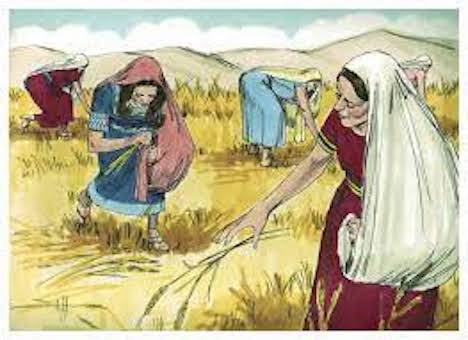One of the highlights of Shavuot is the reading of Megilat Rut. The story of Rut and her pursuit of truth is one of timeless inspiration.
Rut was a Moabite princess, but decided to leave behind all of the luxury and prestige in following her mother-in-law Na’ami to Israel. Rut was aware that the path she was choosing would be one of hardship; no longer wealthy, her only connection to the Jews being her poor and traumatized mother-in-law, Rut did not envision an easy life ahead. Nevertheless, recognizing the truth of Hashem and His Torah, she would not be deterred. Desiring to accept all of the mitzvot in which Bne Israel are obligated, Rut converted to Judaism.
She was eventually noticed by the tzaddik Boaz, who married her after being impressed by her humility and modesty. Together they bore Oved, who would have Yishai, whose youngest son would become one of the greatest people in history: David Hamelech- King David.
As important a lesson as this tale is, we need to know why we read it on this particular holiday. What is the connection between Rut and Shavuot?
There are several answers to this question, including to basic explanations.
First, this story took place during the harvest season- Rut was noticed by Boaz as she was picking from those stalks that the Torah allocates to the poor, in Boaz’s field. Being that Shavuot is ‘the time of harvest’, we remind ourselves of Rut most effectively at this time.
Second, David himself was born on Shavuot. As a celebration of his righteousness and our dedication to emulating him, we read the story of his great-grandmother and the events that eventually led to his birth.
While there are still more connections between Rut and Shavuot, let’s focus on a fundamental lesson that should give us a deeper appreciation of the holiday and of our service of God.
Rabbi Tzvi Einstadter of Baltimore once explained that Rut’s story reminds us of how temporary our time in this world is. Just as a ger, a convert, can leave everything behind in seeking to join Bne Israel, so are we all expected to ignore distractions and to focus on serving God. A ger dedicates himself of herself to the truth, despite the material sacrifices that could be involved in the process. The ger may initially lose social connections or have difficulty at first in adjusting to Torah and to Jewish culture. Despite these and other possible difficulties, the ger focuses on a goal of spiritual elevation- and everything else becomes secondary. While one born a Jew often does not have to undergo changes or adjustments of such a nature, he is still obligated to live life in this way. Rather than thinking that he has a lot of time in which to improve himself and to accomplish his unfulfilled goals, a person must constantly remind himself that this physical world is the only venue for building a spiritual portfolio, and that life passes by very quickly.
A famous story illustrates this point. The Gaon of Vilna, a towering tzaddik, was on his deathbed. Suddenly, he began to cry- and the students around him were stunned. How could such a great man be crying? Was he scared of death? Could he really feel so attached to this false world?
The Gaon explained as he lifted up his tzitzit: “In this world, one can acquire eternity for just a few kopeks- but in the Next World, all the money in existence will not help!”
Despite- actually, because of- his tremendous stature, the Gaon keenly felt this powerful truth. This is the place and the time for accomplishment, and we must never forget this.
Another story drives home the idea:
The well-known Jewish American philanthropist, Mrs. Golding, visited the holy Chafetz Chaim. She was shocked to see the poor conditions in which this great man lived- he didn’t even have a table, but rather a crate placed atop two supports. Instantly she expressed surprise and offered to buy whatever he needed.
The Chafetz Chaim responded with a question: “Where is your furniture?”
She answered in bewilderment: “What do you mean? I am just passing through here!”
The Chafetz Chaim then made his point:’Listen to what you just said- you are just passing through, and so there is no need for having furniture here. Know that I am also passing through- I am passing through this world, and so there is no need for me to buy furniture either!’
We return to Rabbi Einstadter’s lesson: we must take inspiration from the special commitment of Rut, and really from all converts. We must all feel the urgency of the moment, and we must all believe that we are just ‘passing through’. Only by so doing can we properly approach Shavuot, as this holiday celebrates and relives Matan Torah, the Giving of the Torah at Sinai. This, then, is why we read Rut’s story on Shavuot.
May we take this lesson to heart, remembering Rut’s sacrifice, learning from the ger‘s noble spirit, and remind ourselves of the importance of each moment- as we strive for spiritual elevation.
Have a great Shabbat and Yom Tov!





